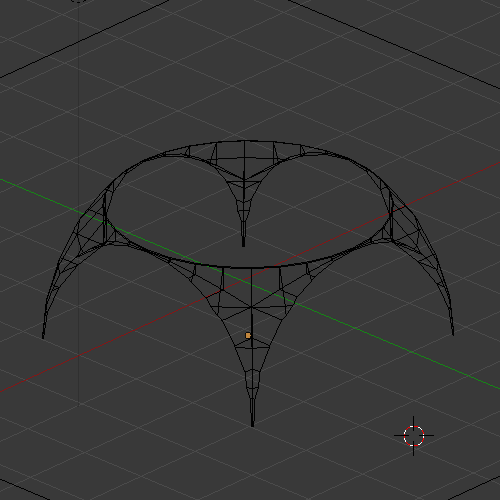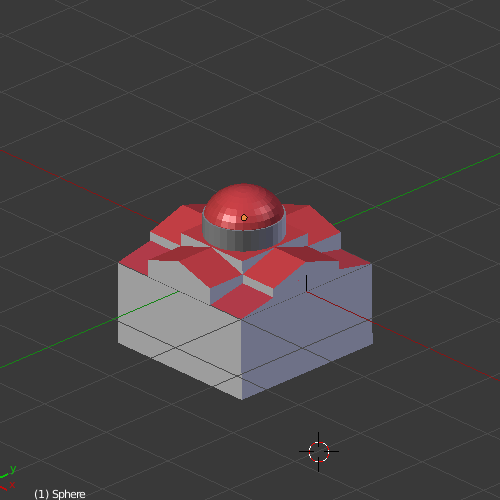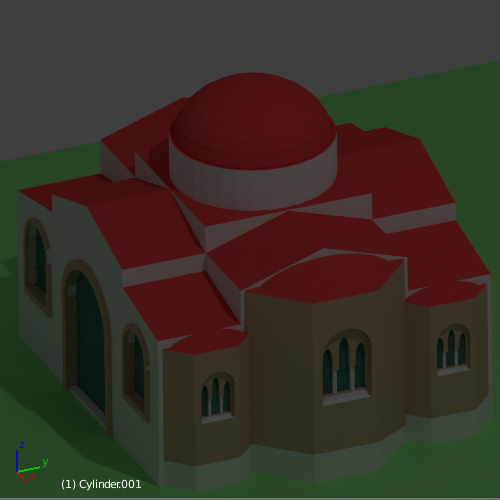Hi, I have been using Blender for many years now, and have modelled a number of famous medieval buildings with it. Primarily Byzantine ones… Mostly used them to provide mods for strategy games (eg Civilization III).
I thought of providing a series of tutorials, given I recently started writing about how to easily create the forms which are a bit more particular and not as intuitive to most modellers.
This first tutorial is on how to create a Pendentive, in four simple steps.
You only need a sphere, a cube, and a cylinder.
The Pendentive is the triangular-slice formation, carved out of a sphere, and used to provide elegant support for a dome. The most famous Byzantine monument that uses it is the Hagia Sophia. (a thread where you can see more of my model of that building, using Blender: The Hagia Sophia Byzantine Cathedral )
The images provided are of my model of the Hagia Sophia (my own work, using Blender) and the Pendentive form you will get in Blender when you complete the brief tutorial…

(my model and render of the Hagia Sophia; made with Blender)

(the finished pendentive, in Blender)
The article has roughly 600 words, and is hosted at https://hubpages.com/technology/What-is-a-Pendentive-form-and-how-to-3d-model-it 






